“Can diabetics eat bread?”
It’s one of the first questions I asked my doctor after my Type 2 Diabetes diagnosis. As a busy mom of three, sandwiches were (and still are!) a lunchtime staple. The thought of giving up bread completely felt overwhelming.
I dove into the research, and here's the good news I want to share with you: Yes, you can absolutely eat bread.
The bottom line is: It's not about no bread, it's about smart bread. That confusing supermarket aisle is actually full of great options once you know what to look for. And finding the best bread for diabetics is all about avoiding one big problem: the blood sugar spike.
Why Most Bread is a Problem for Blood Sugar

Let's talk about that fluffy, soft white bread. It’s a problem because it’s made with refined flour.
Think of refined flour as a sugar that’s just waiting to happen. Your body digests it almost instantly, sending your blood sugar on a rollercoaster. This is what we call a high Glycemic Index (GI)[7].
Many “wheat” breads aren't much better. If the package doesn't say “100% whole wheat,” it's often just white bread with a bit of coloring. Breads to be wary of include:[1]
- White bread
- “Enriched” wheat bread
- Potato bread
- Any bread with added sugars, honey, or high-fructose corn syrup in the first few ingredients.
So, what should you buy instead? Let's look at the top three champions in the bread aisle.
The “Big Three” Diabetes-Friendly Breads
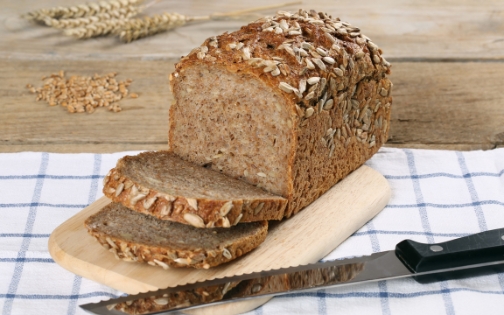
When I'm shopping, I focus on these three categories. They all have one thing in common: they slow down digestion and are much kinder to your blood sugar.
1. 100% Whole Grain or 100% Whole Wheat
This is the gold standard, and it's endorsed by the American Diabetes Association (ADA)[2].
Why it's great: The magic ingredient is fiber. Unlike refined flour, the whole grain includes the bran and germ, which are packed with fiber. Fiber acts like a speed bump for digestion, slowing down the release of sugar into your bloodstream[3].
What to look for: Aim for a slice with at least 3 grams of fiber. If you can find one with over 5 grams of fiber per slice, that's a home run!
2. Sourdough Bread
This one might surprise you! Traditional sourdough bread is made through a fermentation process. Those natural, “good” bacteria and yeast do something amazing: they “eat” some of the starches in the flour.
Why it's great: This fermentation process can lower the bread's Glycemic Index[4]. This means it's less likely to cause a sharp spike in blood sugar compared to other breads.
What to look for: Try to find an authentic sourdough made with whole-grain flour for a double win of fermentation and fiber.
3. Sprouted Grain Bread (like Ezekiel Bread)
You'll often find these breads in the freezer section (they don't have preservatives). Ezekiel bread is the most popular brand, and for good reason.
Why it's great: These breads are made from whole grains that have been allowed to sprout (germinate) before being baked. This process does two things: it makes the nutrients (like protein and B-vitamins) easier for your body to absorb[6], and it can lower the GI or glycemic response compared with some other breads[5].
As a bonus, they are often higher in protein, which helps you feel full and further stabilizes blood sugar[2].
What About Low-Carb and Keto Breads?
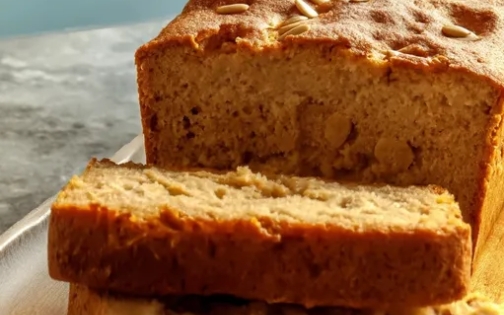
You've probably seen a ton of “keto-friendly” or low-carb bread for diabetics popping up. These are often made with almond flour, coconut flour, or flaxseed meal instead of wheat.
The Pro: They have a very minimal impact on blood sugar, making them a safe and fantastic option[8][9].
The Con: The texture can be different (more dense or “eggy”), and they are usually much more expensive.
If you're adventurous in the kitchen, you can even make your own. I've seen some impressive recipes, like this easy almond flour yeast bread that looks surprisingly like the real thing.
How to Read a Bread Label Like a Pro (My 3-Step Check)
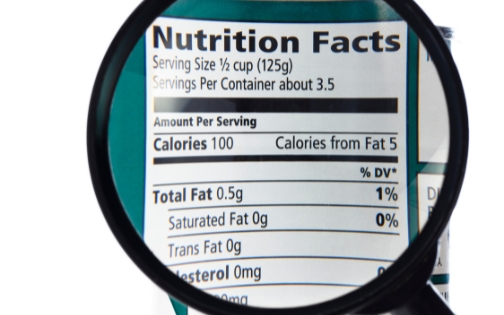
Okay, this is the most important part. Don't trust the pretty pictures on the front of the bag! Turn it over and become a label detective. It takes 10 seconds, I promise.
Step 1: Check the Ingredients List
The very first ingredient must be “100% whole wheat,” “100% whole grain,” “sprouted whole grains,” or “whole wheat flour.”
If the first ingredient is just “wheat flour,” “enriched flour,” or “unbleached flour,” put it back. That's just white bread in disguise[1].
Step 2: Scan the Nutrition Facts
I look at three numbers in this order:
- Fiber: Aim for 3g or more per slice. (More is always better!)[10]
- Added Sugars: Aim for 1g or less per slice. You'd be shocked how much sugar is hiding in “healthy” breads.
- Total Carbohydrates: This is a personal number. A typical slice has 15-20g of carbs. You need to know your personal carb budget per meal (check with your doctor or dietitian!).
Step 3: Don't Forget Portion Control!
This is the final piece of the puzzle. Even the best bread will raise your blood sugar if you eat too much of it. A “serving” is almost always just one slice. If you're making a sandwich, that counts as two servings. Be sure to factor that into your meal's carb count.
What Are the Best Store-Bought Bread Brands for Diabetics?
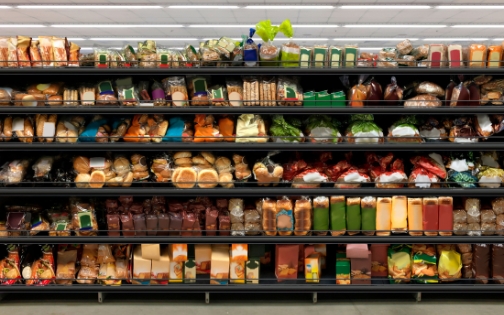
While brands vary by region, here are a few popular ones that consistently have great options that fit our rules:
- Dave's Killer Bread: Look for their “100% Whole Wheat” or “Powerseed” varieties. I personally love their “Thin-Sliced” options, which give you all the flavor for fewer carbs per slice.
- Ezekiel 4:9: The classic sprouted grain bread. Find it in the freezer aisle.
- Nature's Own: Their “100% Whole Wheat” bread is a solid, budget-friendly choice that you can find in almost any US store.
Quick Comparison: Glycemic Index (GI) of Common Breads

The Glycemic Index (GI) is a scale from 0-100 that ranks foods by how quickly they raise your blood sugar. Lower is better! Typical ranges below (actual GI varies by brand and recipe)[7].
| Bread Type | Typical Glycemic Index (GI) | Why? |
|---|---|---|
| White Bread | High (70+) | Refined flour, no fiber. Digests very fast. |
| 100% Whole Wheat | Medium (50-60) | Fiber slows down sugar absorption. |
| Sourdough (Authentic) | Low (50-55) | Fermentation process breaks down starches. |
| Sprouted Grain (Ezekiel) | Low (35-40) | Sprouting process + high fiber and protein. |
The takeaway: Swapping from white to sprouted or sourdough can make a huge difference in your blood sugar management.
What About Homemade Bread Options?
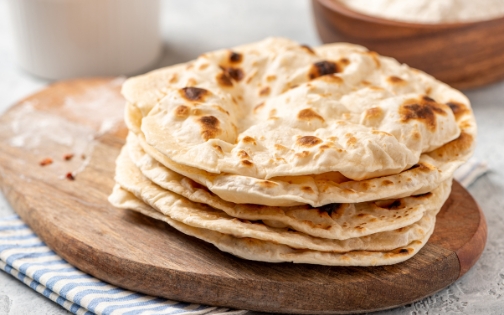
If you're managing your carbs strictly or just want a fun weekend breakfast, making your own low-carb “breads” can be a lifesaver.
Sometimes you just want French toast, right? I've bookmarked this amazing-looking keto French toast recipe to try with the kids. And for a super-fast lunch, this 90-second low-carb bread seems like a total game-changer for busy moms like us.
My Final Take: It's About Smart Swaps, Not Sacrifice
Here's the deal: you don't have to give up bread to manage your diabetes. You just have to be a little pickier.
Next time you're in the store, just remember my 3-step check:
1. Ingredients: 100% Whole Grain first.
2. Nutrition: High Fiber (>3g) and Low Added Sugar (<1g).
3. Portion: Know your carbs and stick to a single serving.
Finding a bread that you love and that loves your blood sugar back is 100% possible. You've got this.
Your Turn!
What's your favorite diabetes-friendly bread brand? I'm always looking for new recommendations to try. Let me know in the comments below!
Disclaimer: This article is for informational and educational purposes only, based on my personal research and experience. It does not constitute medical advice. Always consult with your doctor or a qualified healthcare provider before making any significant changes to your diet or health routine.
References
- U.S. FDA. Draft Guidance for Industry: Whole Grain Label Statements. Clarifies that “wheat flour” is refined flour; “whole wheat flour” contains all parts of the grain. Link. ↩︎ Back to text ↩︎
- American Diabetes Association. Conquer Your Carbs. Guidance on choosing nutrient-dense carbohydrate sources and balancing carbs with fiber/protein. Link. ↩︎ Back to text ↩︎
- Chen S, Sun X, Liu J, et al. Consumption of viscous fiber supplements is associated with improvements in glucose control in adults with type 2 diabetes: A systematic review and meta-analysis of RCTs. Frontiers in Nutrition. 2023. Link. ↩︎ Back to text
- Ribet L, Humblot C, Guyot J-P. Nutritional benefits of sourdoughs: A systematic review. Crit Rev Food Sci Nutr. 2022. Notes that sourdough fermentation can improve nutrient bioaccessibility and may reduce GI. Link. ↩︎ Back to text
- Mofidi A, et al. The Acute Impact of Ingestion of Sourdough and Whole-Grain Breads on Glucose Homeostasis, Appetite, and GLP-1. J Nutr Metab. 2012. Includes a sprouted-grain bread showing favorable glycemic responses versus several comparators. Link. ↩︎ Back to text
- Benincasa P, et al. Sprouted Grains: A Comprehensive Review. Plants. 2019. Summarizes increases in certain B-vitamins, amino acids, and bioaccessibility after germination. Link. ↩︎ Back to text
- Atkinson FS, et al. International tables of glycemic index and glycemic load values: 2021. Am J Clin Nutr. 2021. Provides GI ranges for common breads (white ~high; many whole-grain and sourdough options in low-to-medium range). Link. ↩︎ Back to text ↩︎
- Lange E, et al. The Influence of Various Types of Functional Bread on Metabolic Responses. Appl Sci. 2024. Breads with added oilseeds/fats/protein showed reduced postprandial glycemia versus controls. Link. ↩︎ Back to text
- Meng H, et al. Effect of macronutrients and fiber on postprandial glycemic responses: controlled feeding study. Am J Clin Nutr. 2017. Demonstrates that lowering available carbohydrate and increasing fiber/protein reduces glycemic excursions. Link. ↩︎ Back to text
- American Diabetes Association. Reading and Understanding Food Labels. Suggests using %DV to target more fiber (≥10% DV) and less added sugars. Link. ↩︎ Back to text
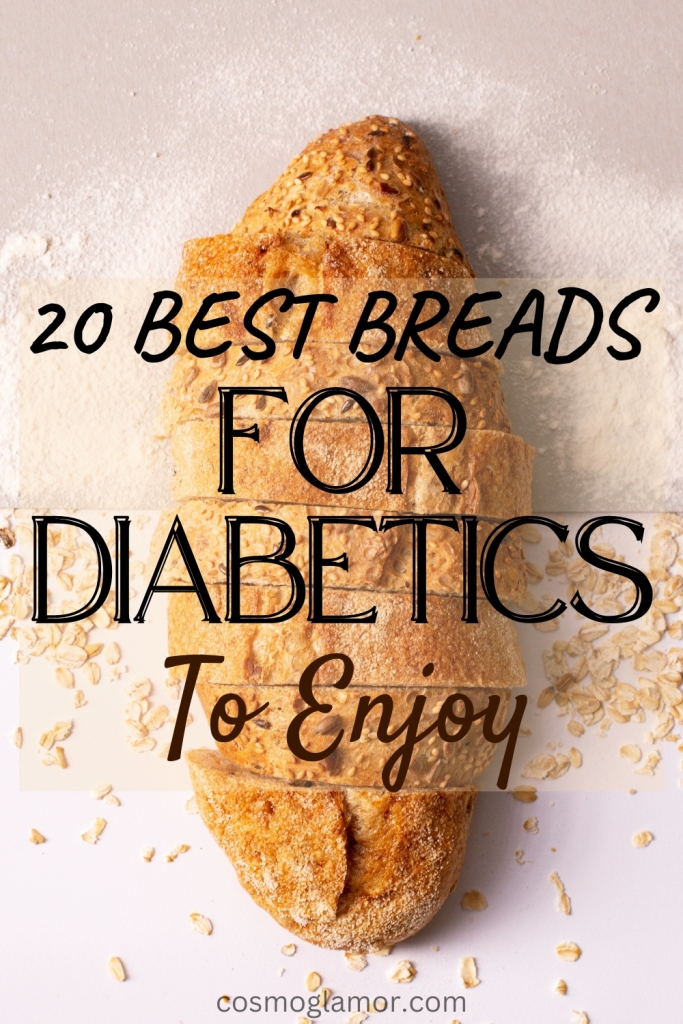





8 Responses
This is really interesting! I was diagnosed with type 2 diabetes last year, and I’ve really missed having toast in the morning. I’ve tried some store-bought low-carb breads, but they were either dry or had a weird aftertaste. I’m especially intrigued by the almond flour breads. Do you have any recommendations for a good beginner almond flour bread recipe? One that’s not too complicated?
Hi Brenda! I’m glad you found the article helpful. I totally understand the struggle with finding a good low-carb bread. For a beginner-friendly almond flour recipe, I highly recommend trying the “Keto Bread (Easy, Fluffy, 5 Ingredients)” mentioned in the article. It’s simple to make and has a really nice texture. Just make sure you’re using finely ground almond flour for the best results. Let me know how it turns out!
I’ve been making low-carb bread for a while now, and it’s been great for my blood sugar. But I’m getting a little bored with the same old recipes. I love the idea of trying some international breads, like the Keto Naan. Does anyone have any tips for making it? I’ve never worked with yeast before.
Hi Sarah, That’s fantastic that you’re exploring low-carb baking! Keto Naan is a delicious choice. Working with yeast can seem intimidating, but it’s not as hard as you might think. The key is to make sure your water is at the right temperature (around 110°F) to activate the yeast properly. Also, don’t be afraid to let the dough rise in a warm place until it’s doubled in size. This will give you a nice, fluffy naan. There are lots of great video tutorials online that can guide you through the process step-by-step. Good luck, and enjoy your culinary adventure!
This article is so encouraging! I’ve been avoiding bread like the plague since my diagnosis, but these low-carb options sound amazing. I’m especially interested in the flax bread. I’ve heard flaxseed is really good for you, but I’ve never baked with it before. Does it have a strong flavor? And does it make the bread dense or dry?
Hi Michelle, thanks for your comment! I’m so glad you found the article helpful. It’s great that you’re interested in flax bread – it’s a nutritional powerhouse! You’re right to ask about the flavor and texture. Flaxseed meal does have a slightly nutty flavor, which some people find quite pleasant. It’s not overpowering, though, and it tends to blend well with other ingredients.
As for the texture, flaxseed meal can absorb a lot of liquid, so it’s important to get the ratios right. If not done correctly, it can result in a dense or even slightly gummy texture. However, when used properly, it can create a surprisingly light and moist bread. Many recipes recommend combining flaxseed meal with other low-carb flours, like almond or coconut flour, to improve the texture. It’s always a good idea to follow a well-tested recipe and maybe start with a small batch to get a feel for how the flaxseed behaves.
This is a fantastic overview of low-carb bread options! I’m on a keto diet for diabetes management, and I’m always looking for new recipes. I’m curious about the store-bought low-carb breads. Are they generally a good option, or is it better to stick to homemade? I find it hard to always find the time to bake.
Hi Angela, thanks for your question! I’m glad the article is helpful for your keto journey. You’re right, finding the time to bake can be tough. As for store-bought low-carb breads, they can be a convenient option, but it’s important to be a discerning consumer.
The quality of store-bought low-carb breads can vary significantly. Some are made with high-quality ingredients and have a genuinely low carb count, while others contain added sugars, starches, or other ingredients that can raise blood sugar. It’s crucial to carefully read the nutrition label and ingredient list. Look for breads that are low in net carbs (total carbs minus fiber and sugar alcohols), have a high fiber content, and are made with wholesome ingredients like almond flour, coconut flour, or flaxseed meal. Be wary of products that list wheat gluten or modified wheat starch high on the ingredient list, as these can still impact blood sugar. If you find a good quality store-bought option that fits your macros and tastes good, it can definitely be a convenient choice for busy days. However, homemade bread often allows for better control over ingredients and can be more cost-effective in the long run.